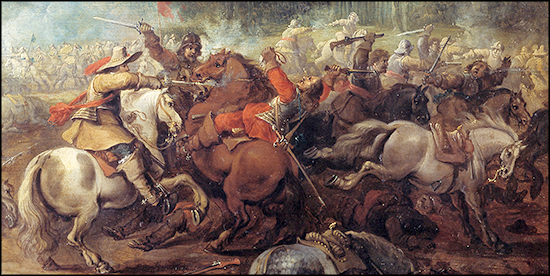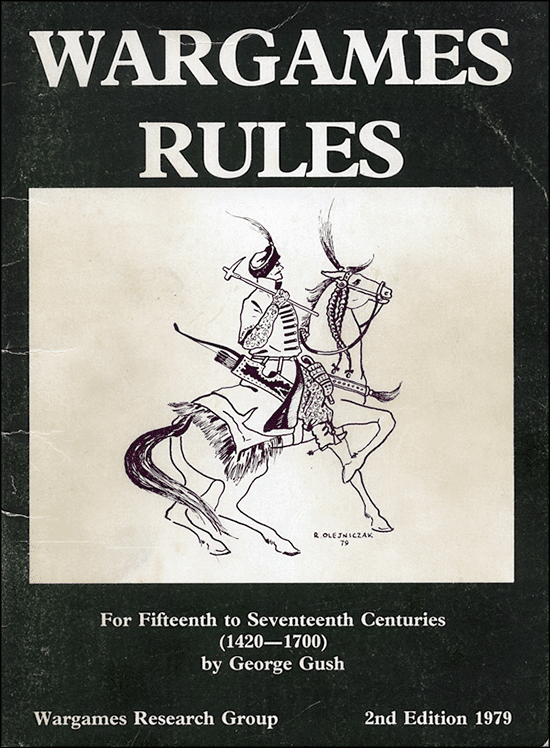I've been reevaluating my projects lately. It's just November, but I'm looking back on a kind of banner year for gaming, both in the number and diversity of games played and also in how many figures I've painted.
As always, best-laid plans go by the wayside as unintended projects rear up and I with my impulsive, impetuous nature jump right in. Mortal Gods, Test of Honor, and SPQR spring to mind as projects that weren't on my radar on January 1, but which I've either started this year or completed. Saga was a project I started in September last year. Although at the time I only had my El Cid Spanish I painted for Lion Rampant to press into service. My Welsh faction for Saga was completed in January. I'd started with Jugula some time ago, but only got around to completing my horde of gladiators in January.
Some longstanding projects languish, victims of the new new thing, whose shiny delights displace and somnolesce earlier distractions. One of those slumbering distractions is the 1672 Project that I started long ago, but which is now coming back online as the new old thing.
The initial impulse for the 1672 Project started around 2009 when Mark Copplestone released the first packs of his Glory of the Sun range covering late 17th c. European armies for the early wars of Louis XIV. At that time Bill Stewart, Phil Bardsley, Rich Knapton, Doug Hamm, and I got enthused and started buying and conspiring. We planned on using Beneath the Lily Banners, although there was some reservation amidst concerns that the rules (version 1) had some gaping holes and staggering vagaries. The project sort of fizzled. Rich and Phil are now deceased. North Star bought the range and re-named it North Star 1672. I can't gauge Doug's and Bill's interests at this point in time. Bill lives near enough to me and we game often; however, he's undecided about what to do with the figures he has (and has yet to paint). Bob Mackler is enticing him towards a different big battle style project with the figures. Doug is 150 miles away on a good day—and on the foreign side of an international border. Past conspirators in other projects have no interest in the era as a wargaming subject. My expectation is that any further efforts I make for the 1672 Project will be solo. Alone again, naturally.
So, the big question now that I'm slapping paint on lead again is what do I want to do with them.
Pike & Periwig
I earnestly went the solo route for a while and even got fairly well along with writing my own set of rules for it, Pike & Periwig. I like my rules, although I have more work and lots of play-testing to get them right, but I'm not sure I really want to commit myself to a system of my own design and put all my eggs in that basket.
I think that Pike & Periwig might be a lot of fun, but I'm absolutely certain that I'd be the only person painting and basing figures for it. Plus, I'd have to teach everyone the rules and defend my glaring idiosyncrasies. Writing rules is a rabbit hole down which people like me disappear, going deeper into the minutiae of getting right this or that representation of some obscure detail of the military art of the period, only to find in the end that it adds nothing to the play of the game, or even distracts from it.
Nevertheless, saying adieu is hard.
File Leader
I recently got a copy of the venerable vintage set of company-level rules File Leader by Pete Berry and published by Partizan Press in the 1980s. I really like them and have been mulling over the possibility of using them for the 1672 Project rather than use Pike & Periwig.
I have reservations there, too, because the basing system is unique enough to make re-use of the figures difficult without also rebasing them. Basically, the foot are six figures on 60mm square bases (or 'trays' as the rules call them), the horse are three figures on a 60mm square base, officers (which include ensigns, drummers, etc.) are on 40mm square bases.
The rules were written for 25mm figures back before serious scale creep became a thing. Fitting six of the North Star 28mm foot figures on a 60mm square base is no problem, but three horse on the same base size is pretty crowded. They'll fit, but it'll be cozy. According to Mr. Berry himself, the base sizes for horse and foot (and guns, for that matter) need to be the same. Maybe adopting 70mm or 75mm square basing would resolve the horse crowding without being too big for the foot. It's probably better for the guns as well. The small battalion guns fit on a 60mm square base easily, but the larger field guns are about 80mm long and hang out fore and aft from the base. However, at the company/troop level, I don't think I'll need a lot of field guns.
I would also want to tweak a few things. Pete wrote the rules for the English Civil War, but they're adaptable to the latter 17th c. I'd want to call out specific rules for grenadiers and plug bayonets.
I'm finding it hard to pull the trigger and commit to File Leader. There are some things about the rules that I really like, but I'm not sure if they're rules I can see playing a lot over time. I'm just old enough that my gaming days are starting to look like sand flowing through an hourglass. I don't want to put a lot of time, resources, and energy into gaming ventures that go nowhere.
The Pikeman's Lament
I love The Pikeman's Lament. As regular readers of this blog know, I'm rampant in my love for Dan Mersey's and Michael Leck's work with this series of rules.
I think TPL could do the 1670s well. I only hesitate because I've got a lot of 'Rampant' projects going on. I have a lot of AWI and ACW for Rebels and Patriots—it was a major focus this year. Already for TPL, I have a pile of figures for The Irish Project and have recently acquired more, in addition to the unpainted horse that beckon my brush. I have some figures painted for ECW and many, many more partially painted or naked lead yearning to be clothed. I don't lack for pikes and shots.
It's my lack of lacking that gives me pause. I love the pike 'n' shot period, so I hesitate making all my projects with one set of rules, no matter how much I like them. I do have another slumbering project for the Thirty Years War that will be use the Pike & Shotte rules from Warlord Games, but that's been off the back burner and into cold storage since before the earth cooled (although I'd like to see it revived at some point). That project also relies on combining with other peoples collections to play games. For 1672, I'm painting both sides, the terrain, and supplying all the dice, too.
At this point, The Pikeman's Lament is looking to be the most likely candidate. I don't have to write the rules and they're a finished product. The only thing I'd do is tweak the close order rule for shot units to reflect the use of plug bayonets; namely, when in close order, shot can't shoot. I think I'll also allow forming close order as a reaction to being charged. For example, as a reaction, a shot unit can form close order on a roll of 7+ on 2D6. If they try and fail, they become wavering.
I'm getting close to needing to base the figures I'm painting now, so I'll need to make a decision. If I go with TPL, I'll use the standard 3-2-1 basing that I've used for my other 'Rampant' projects so far.
Other considerations
I mentioned Pike & Shotte for my TYW project. I could use the rules for this as well, but I find TPL more enjoyable and I don't want to commit to a big battle project, especially when I'm painting all the figures.
One idea that's been way in the back of my head is using the excellent WRG Renaissance rules by George Gush.
I played these rules a lot in the late 70s and early 80s. I've retained a strong love for them, even though it's been a dozen years since the last time I played them, a game using Kevin Smyth's later 100 Years War figures. Back in the day, we played later 17th c. with them. I had a Brandenburg army using the excellent Dixon Grand Alliance range (sculpted by Mark Copplestone) that I sold when I went away to seminary in 1986. I always wanted to recreate an army with the Dixon figures. I started trying 30 years ago; it hasn't happened yet—but I did buy some figures.
A similar option would be to use Dave Millward's Musketeer rules. They're like Gush's rules, but a bit simpler.
One drawback with either Gush or Millward is that the style of the rules is vintage. I'm not sure whether I could entice enough people to play, even if I'm supplying all the figures, terrain, dice, and free beer. Kevin Smyth and I had a short-lived stab at reviving WRG ancients. We played a few games, but in the end, we couldn't sustain interest. As deep as my nostalgia runs for the Gush Renaissance rules, unless there were some groundswell of interested players, it's doomed to scratch an itch and then languish.
Another, more remote and even vintager idea, is to use the WRG 1685-1845 rules. They might require a slight bit of tweaking to eke the rules back a decade from their starting point.
One final consideration I had was to use The Complete Brigadier. Also just slightly out of our period, but capable of being easily adapted. I've owned more than one copy going back years, they're intriguing, but they reward only diligence. The system is a bit peculiar, I'm not sure if I could draft people into playing it.
Final thoughts
At this point, the odds are good that I'll use The Pikeman's Lament. I don't want the figures to languish forever. I've even just ordered some Swiss Guard for Louis. I also just started a dozen French grenadiers and am getting ready to clean and prime a lot of French musketeers, including some figures with flintlocks that I'll paint as Fusiliers du Roi.
More posts to follow, I hope, that will track my progress and let you know what direction I've settled on. I know you're on the edge of your seats.









The figures are beautiful and deserve some paint on them. If Pikeman's Lament gets them onto the table, I say go with that, and maybe the bug will bite and the collection will expand. Better than leaving those lovely figures all forlorn!
ReplyDeleteThe proliferation and leapfrogging of projects sounds all too familiar! I also struggle to find a balance between playing too many rules and getting bored with too few. My plan for this year was mainly to concentrate on various Rampant games, but a lot of other games have been played since...
ReplyDeleteI may know what you mean about the hazards of using your own rules. It is very satisfying to create something like that, but strangely intimidating; since you are the creator it feels like an obligation to correct problems, no matter how insignificant. A good example of the ambiguous feelings comes from the first presentation of my Triplex Acies rules at Enfilade last summer. It functioned as a battle game, the players liked it; that was plenty satisfying. But it did not function quite the way I had envisioned, so tinkering continues.
ReplyDelete